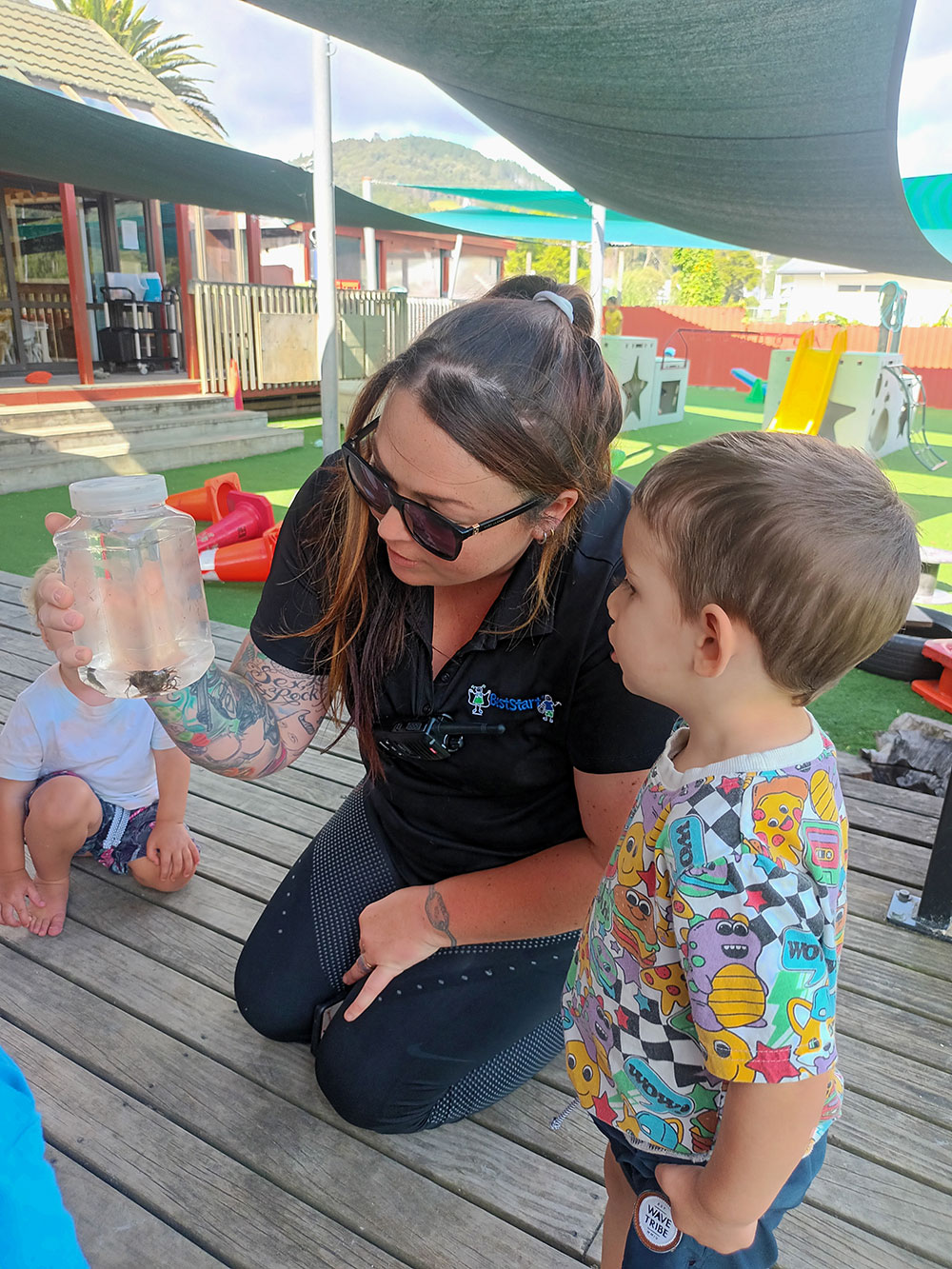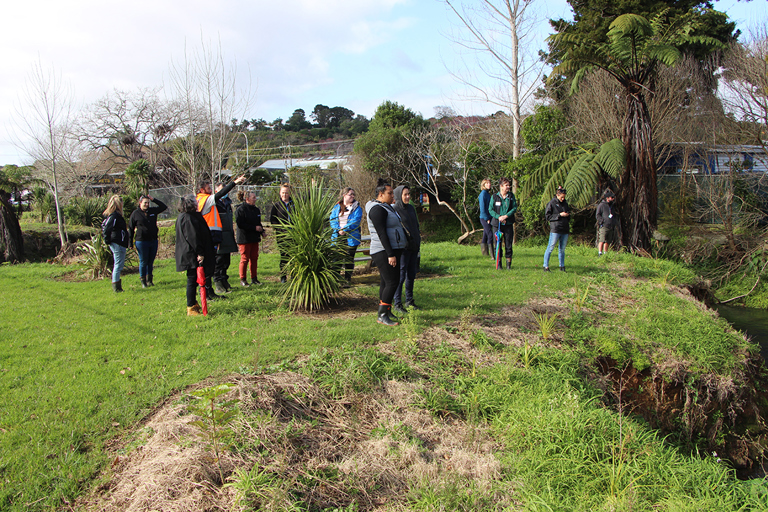Story
Guardians of the awa
The Waitaua stream is in safe hands thanks to two evolving Wai Restoration projects on the awa and a generation of tamariki who are determined to see it thrive.
Back in 2022 BestStart Pipiwai Kindergarten undertook a journey to initiate a restoration project on the Waitaua Stream which bordered the centre boundary .
At the time, lead Enviroschools teacher Andrea Chittock had observed changes in the awa which was once full of ducks and tuna (eels), but sadly found this was no longer the case. With support from Enviroschools facilitator Judy Crooks, a hefty restoration was soon underway, including water quality testing, weeding the overgrown banks of pest plants and using mulch and planting days to breathe new life into the area. The return of ducks swimming along the awa was a significant mark of success for the tamariki and kaiako at the centre.
Upstream, BestStart Pipiwai Road early childhood centre were following the awesome mahi taking place and after noticing tamariki throwing the occasional toy into the Waitaua stream, they wanted to join in caring for the awa. The kaiako became enthusiastic about enlisting the help of Northland Regional Council’s Biodiversity team to hold environmental education sessions about the habitat’s fish species.

BestStart Pipiwai Road Enviroschools key kaiako Leah Hume showing tamariki freshwater findings from the awa.
Biodiversity advisors visited the centre to speak with Kaiako about their Enviroschools goals and to set some Gee’s Minnow traps in the stream to discover what creatures were living there. They showed the enthusiastic tamariki what was caught - advisor Brooke Gray found the trap full with Cran’s bullies (Gobiomorphus breviceps) and common bullies (Gobiomorphus cotidianus)!
The tamariki were delighted to find they had real fish living in their awa, and when Brooke and the team repeated the learning a few months later, they found even more species like kōura (freshwater crayfish, Paranephrops planifrons) and redfin bullies (Gobiomorphus huttoni).
Most importantly Kaiako and Brooke discussed the importance of keeping rubbish (and toys!) out of the awa to protect the creatures that live there.
A message from Brooke about looking after the awa:
“Engaging tamariki at such a young age helps them be aware of their surroundings, and especially mindful of the life that often gets overlooked, whether that’s small, camouflaged native fish in streams, or birds in the treetops.
“By undertaking these sorts of learning events, we can encourage tamariki to act as kaitiaki for their awa and feel a sense of belonging within the environment. Young voices can often be the biggest advocates for biodiversity and help build awareness within their whānau.”
Tu meke BestStart Pipiwai Kindy and BestStart Pipiwai Road.




